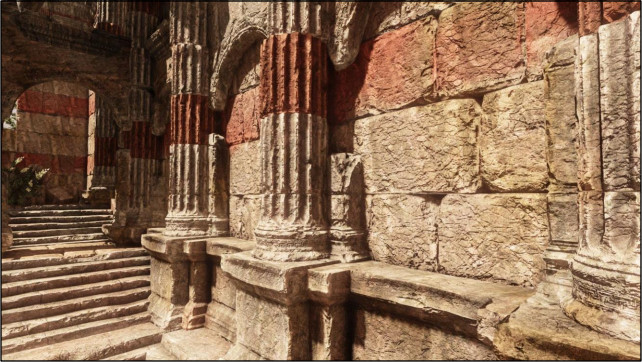If you’re interested in the new open-access “Journal of Computer Graphics Techniques“, some of us editors, contributors, and other birds of a feather are informally meeting up at SIGGRAPH 2012. You’re welcome to come and chat (half the point of SIGGRAPH, amirite?):
Time: 5:30-6:30 pm Monday (just before this party in the same hotel)
Place: Marriott HQ hotel lobby, behind registration. This area:

Yes, this time conflicts with the Electronic Theater on Monday, etc., etc. – every time almost every day from 9 am to 8 pm on conflicts with something, and oddly no one wanted a 7 am meeting.
Morgan McGuire, the Editor-in-Chief of JCGT, won’t be attending SIGGRAPH, but has a great blog entry about JCGT’s progress and status. The whole post is worth reading, and I’ll repeat the last part here:
How is the JCGT board funding the journal?
The answer comes in three parts. First, it isn’t that expensive to publish a graphics journal electronically. All of the writing, editing, and reviewing is done by volunteers and most of the software is free open source (LaTeX, BibTeX, Apache, MySQL, mod_xslt2, Emacs, Ubuntu, etc.). The board is unpaid, as is the case for most academic editorial positions. Graphics authors and editors are capable of producing professional-quality typesetting, layout, and diagrams on their own.
Second, Williams College has a grant from the Mellon Foundation to create digital archives to match the quality and reliability of the college’s substantial physical scholarly archives. Those physical archives are in rare books, visual art, scholarly journals, and congressional papers. I find the breadth and depth of those fascinating: the college’s holdings include original drafts of the US Declaration of Independence and Constitution, first editions of major scientific works such as Principia Mathematica, and paintings by major artists such as Picasso. The college is well-positioned to archive and conserve digital computer graphics papers and unlike a commercial publisher, an academic library has no agenda for those materials beyond preserving knowledge for all.
Third, the minor incidental costs of advertising, hosting, and legal are being picked up out of pocket by a few of us. Of of the financial contributions and dues I’ve given to graphics organizations, this was the one I was most pleased to make. We’re not accepting donations or seeking outside funding–that would subject us to bookkeeping overhead and legal requirements. If you want to support the journal, the best way to do so is to read it, write for it, and offer your services as a reviewer.
One other tidbit: the first paper accepted by JCGT has been downloaded over 10,000 times in four weeks. Clearly there’s a high curiosity factor for an inaugural article, but reaching this wide an audience is a good sign.



